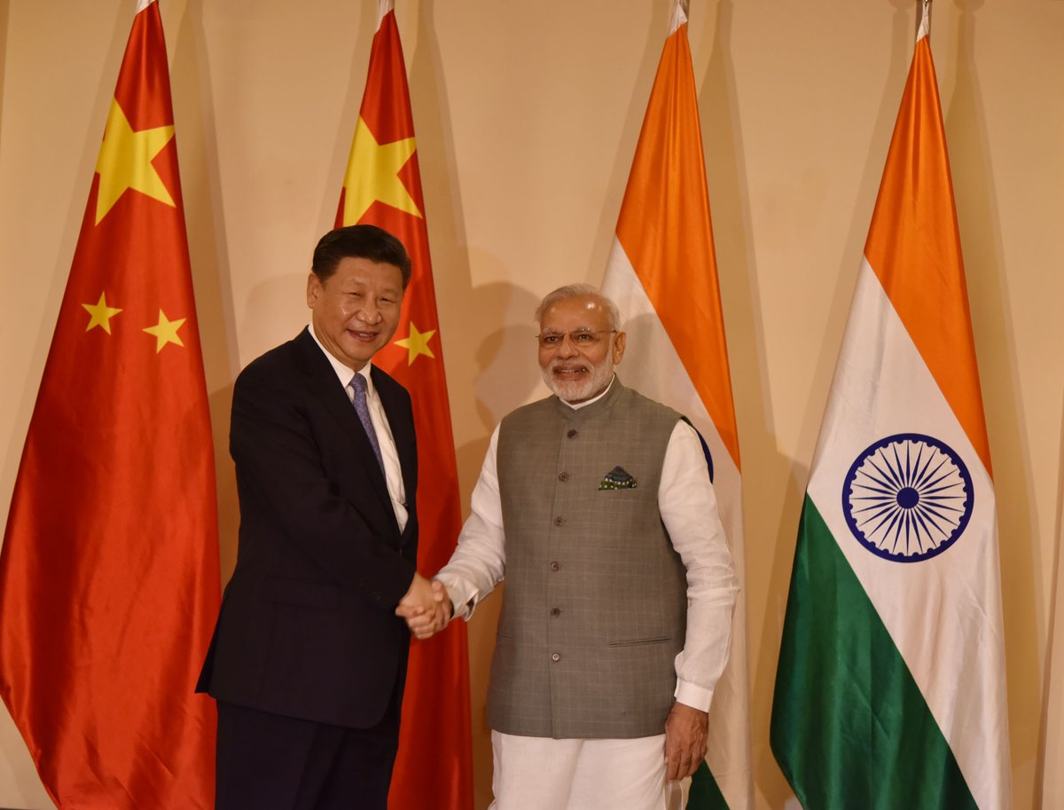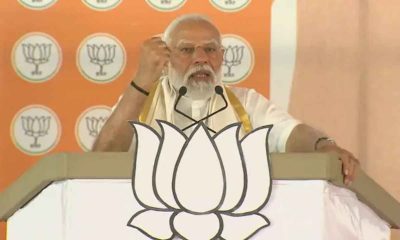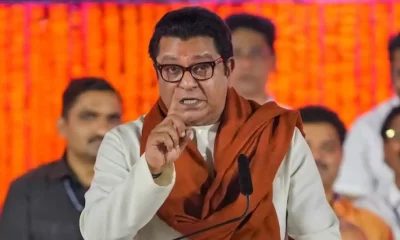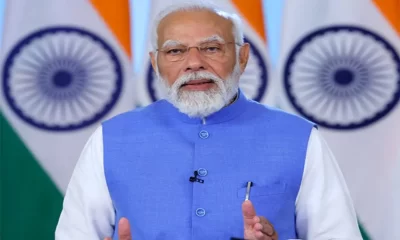Opinion & analysis
WAR BUT NO WAR

[vc_row][vc_column][vc_column_text]~ By Syed Ata Hasnain
As the standoff at Doklam Plateau in Bhutan, the 89-square kilometre area which China lays claim to, enters its ninth week and National Security Adviser Ajit Doval heads back from Beijing, the Chinese game plan is becoming increasingly clear.
In early June 2017, China had taken Bhutan and India by surprise with aggressive moves to build a road through the Doklam Plateau to the southern end of the Chumbi Valley near Trijunction. Doklam is disputed between China and Bhutan; India is not a party to that dispute. However, Doklam lies on the eastern side of the Chumbi Valley, opposite our defences on the western side of the same valley. Any construction activity there changes the strategic picture with enhanced Chinese capability to operate against the southern end of Chumbi. India is even more sensitive to the extension of the road because that provides capability to the Chinese to threaten the Siliguri Corridor, commonly called the Chicken’s Neck, lying fifty kilometres further south but through some very rugged terrain.
When Bhutan’s protests did not work, it requested India for help which India is duty bound to extend under provisions of the 2007 India-Bhutan Friendship Treaty. Elements of the Indian Army moved into the Bhutanese territory and without firing a shot became an obstacle to further Chinese advance along the road.
The kind of jostling seen on amateur videos was reminiscent of the Nathu-La stand-off of 1967, although the latter was an eyeball-to -eyeball contact with bayonets at the ready. At Nathu-La there were heavy casualties on both sides, although more on the Chinese side, after the gung ho Chinese decision to use force to stop the Indian Army from constructing a wire fence to demarcate the exact border alignment at Nathu-La post.
Unlike Nathu-La 1967, the Chinese response this time has been in different domains. First, it refused to allow the annualMansarovar Yatra to proceed from Nathu-La on lame pretexts. Thereafter, it commenced a vitriolic psychological campaign in its state controlled media, such as the like of which has not been witnessed in many years. The choice of words was actually unbecoming of a responsible power who is also a member of P5. That vitriol grew worse by the day and has yet to seize. Third, it conducted a brigade level fire power exercise in Tibet to project its readiness to employ the military option and intimidate India.
While no Chinese mobilization or troop concentration has been reported, there were enough threats to project as if a war was about to break out. The issue for us to examine is whether this was an accidental and unrealized event which just spiraled out of hand or was it deliberate.
Strategic military sense would have dictated to the People’s Liberation Army (PLA) that attainment of whatever political objectives it had set would not be easy.
By all reckoning Chinese President Xi Jinping’s ambition of removing all opposition and obtaining and enhancing his influence substantially at the 19th National Congress of the Communist Party of China in Autumn, 2017 is the core reason for the maverick Chinese actions.
Xi Jinping has emerged as one of the most powerful Chinese leaders in the post Deng Xiao Ping era and is actually ambitious enough to attempt overtaking the image of even the father of China’s modernization. However, the projection of diplomatic, economic and military strength is an essential element of Xi Jinping’s strategy. The politico-economic strategy has been largely displayed with the image building Belt & Road Initiative (BRI) conference in Beijing in May 2017; the attendance by even Japan and the US was a major diplomatic victory for Xi Jinping. This is further enhanced with the US reliance on China to rein in North Korean leader Kim Jong-un and prevent his threatening gestures. Xi Jinping had earlier initiated a host of measures to strengthen the effectiveness of the Chinese Armed Forces and reorganized the structure. The only thing perhaps left for Xi Jinping was to display China’s military might a tad more than just at parades, under his leadership; perhaps perceived by him as a virtual certification of his contribution to the Chinese nation. Earlier he had intimidated and tested the international community’s will on the issue of South China Sea by refusing to accept and implement the decision of the international tribunal.However, display of military intimidation there is fraught with higher risk.
The choice of Chumbi Valley was perhaps triggered by the decision of both India and Bhutan to avoid attendance of the BRI conference in Beijing; two nations noticeable by their absence and both being China’s immediate neighbors. China hoped that the proximity of the trigger point to the strategically vulnerable Siliguri Corridor would force both India and Bhutan to capitulate against Chinese demands and pressure.
There doesn’t appear any intent to trigger major hostilities because there could be no guarantee of success in a localized exchange and an unpredictable war could go out of hand at this crucial moment. In the worst case scenario of such an exchange the scope could quickly be extended to other zones in Ladakh, Central Sector or Arunachal Pradesh thus causing greater intimidation without going to war. It probably was appreciated by the PLA that India would unlikely risk a conflagration so close to its vulnerability and would buckle under pressure. It perhaps did not think through to the last order implications that an extended Indian resistance and acceptance of mutual withdrawal would amount to a strategic Indian victory. That is the likely reason one can ascribe today to a possibly long standoff extending into autumn because the Chinese cannot afford to accept withdrawal before the autumn meeting of the 19th National Congress. That is also the reason why some lower level intimidation by the PLA is likely to continue in other areas; Barahoti in Central Sector has already seen an incursion two weeks ago. It could happen in the traditional areas of Ladakh and Arunachal; the idea being to boost the eye ball attraction through propaganda.
Those who were imagining the feasibility of the triggering of a full spectrum war between India and China must be clear that under no circumstance does such a showdown add to political objectives that China seeks in the long run or Xi Jinping’s current strategy. It knows that India has no major political ambitions, at least for the current. China has enough problems to contend with in terms of Japan and South East Asia. It should be pragmatic enough to ensure that creating another major adversary extending into the Indian Ocean Region serves Chinese interests no purpose.
China’s growth story still revolves around the security of its Sea Lines of Communication (SLsOC) which are vulnerable and India can make them even more vulnerable, if it chooses to. Even a short limited spectrum war involving exchanges on the border and possibly one or two exchanges of surface to surface missiles, more as messaging, is unlikely to achieve any objectives and would show China in poor light with inability to press for its objectives.
This analysis would be incomplete without a positive word on the Indian strategy of ‘sticking it out’. Quietly, without unnecessary bluster, India has prevented a showdown and yet displayed strategic resolve. This is one of the most difficult things to achieve in strategic affairs.
What must continue is the dignified and quiet demeanor that has been on display from the Indian side. External Affairs Minister Sushma Swaraj’s recent speech in Parliament has been the most appropriate display of sensible discretion. Sometimes victory lies in the realm of silence and dignity. The analyses in the media by knowledgeable analysts have also been shorn of bluster but yet fairly accurate.
Next month’s BRICS summit to be held in the Chinese city of Xiamen and to be attended by Prime Minister Narendra Modi is being viewed with much interest. However, China has often displayed its ability to keep issues of concern quite well separated.
BRICS is more about economics and although the sensitivity of India’s non-attendance of the BRI conference may continue to rankle China it is unlikely that it will not adopt a business as usual attitude towards India at the upcoming conference. However, memory of the visit of then Foreign Minister Atal Bihari Vajpayee to China in 1979 with the war on Vietnam launched even with his presence there, needs to be recalled.
The last thing the Indian media or the Indian state should do is to celebrate prematurely. Nothing has yet been achieved and classically a stalemate continues. The only thing to be positive about is that war was almost there and yet not there. It should be enough of a signal to us that it is time to seriously look at our defence capability and infrastructure and review the long dead military transformation which was to take place in the first decade of the millennium.
 The writer is a former General Officer Commanding 15 Corps, now associated with the Vivekanand International Foundation and Institute of Peace and Conflict Studies
The writer is a former General Officer Commanding 15 Corps, now associated with the Vivekanand International Foundation and Institute of Peace and Conflict Studies
[/vc_column_text][/vc_column][/vc_row]
Opinion & analysis
Never say never again: Nitish Kumar’s expertise at hoodwinking allies shines through!
Nitish Kumar does it again!
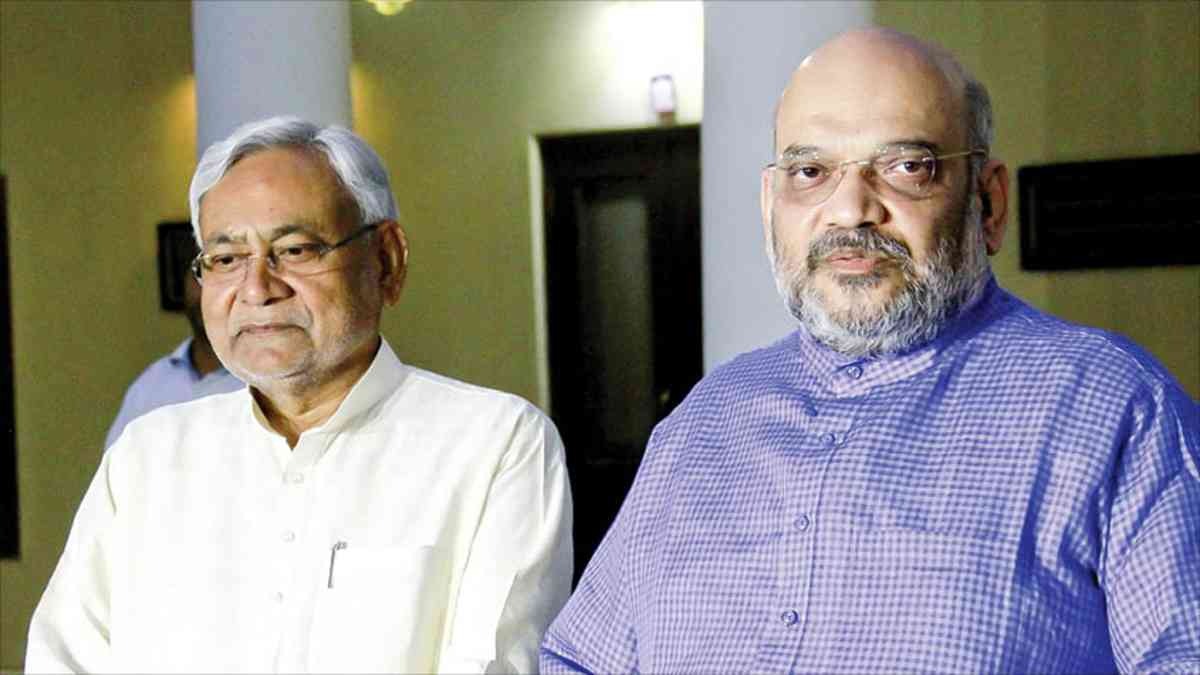
By Vikram Kilpady
Possibly the first state government to fall after the ascendance of the Modi-fied BJP without that party’s hand in the machinations has just shaken up the political landscape in Bihar, and the country. Nitish Kumar has pulled the rug from under the feet of the party. But since history has seen several turns first as a tragedy then as a farce, as noted by Hegel and Marx, Nitish Kumar possibly has the last laugh since he’s done the tragedy-farce duo twice. First, with the Rashtriya Janata Dal and, now, with the BJP, which among its many leaders has one man who gets called Chanakya way too often.
Once the party with a difference, the BJP has mastered the game of overturning elected governments; Madhya Pradesh where a maharajah switched to his aunt’s party, twice in Goa where elected Congress MLAs found faith in a new boss, Maharashtra where the cadre-strong Shiv Sena was ripped apart by a minister’s ambition, Karnataka where Operation Lotus blossomed first and spread its petals across the country.
Soon after the Modi magic of 2014, the dispirited opposition found new hope in the victory of Nitish Kumar and Lalu Yadav in the Bihar elections of 2015. But that was short-lived, Nitish found himself stifled by the ambition of Tejashwi Yadav and changed his mind, walking back to the BJP, which was eager to support him.
The 2020 election had the writing on the wall written in a more legible hand. The BJP won 74 seats, just one short of the party with the most seats, the RJD, which won 75. Nitish Kumar came third with 43 seats. The BJP was gaining at the cost of the Janata Dal United, which beat down Chirag Paswan’s rhetoric but couldn’t manage enough MLAs. The national party cannibalised its partner several times over throughout their association. The symbiosis of the initial years under Vajpayee was becoming a brain and brawn drain for the JDU. The election results were not free from controversy though, with the RJD alleging ballot boxes were changed in the middle of the night. The elections may have been won by the BJP and Nitish Kumar, helped by the image of Prime Minister Narendra Modi, but politics is not just platitudes, it also involves dirty work.
The use of RCP Singh by the BJP pointed at the potential of a Shiv Sena redux in the JDU, prompting the old fox to return to familiar Janata buddies, though once stabbed and all. But what is politics without the choosing of strange bedfellows, even if it borders on promiscuity and worse.
Read Also: Bihar BJP accuses Nitish Kumar of betraying Bihar people
The other angle to see the Bihar turn is from the lens of national politics. The idea of a country rid of the primary opposition party, aka becoming Congressmukt Bharat, has gained popular acceptance among the many for whom democracy is just voting in a new government. The turning of the Congress from its trademark white kurta to black attire was seen as a gimmick by the mainstream media. Far from a gimmick, the party was using what it encountered in Tamil Nadu where it rides on an ally’s stronger connect. The DMK’s parent, the Dravidar Kazhagam and its offshoots, still wears black shirts in protest against the idea of a homogenous India smearing over the vast differences between the country’s many constituents. With Hindutva becoming that all-unifying glue being applied by the BJP across the length and breadth of India, the Congress’s choice of black shows a new savvy.
Covid may have eclipsed the economy but many other slights and the worsening employment situation have India on uneven terrain. The Centre has to hold, but with accountability of successive state governments now enveloped buried in the image of the much-sought-after Strongman, an image that papered over the stark inadequacies of his administration, and won him and his party elections handsomely. The country was wearily dragging its battered economic self for another election some two years away. Nitish Kumar’s somersault has brought realpolitik back into the mix but investing all hope in serial side-switchers can be harmful for one’s emotions and well-being.
To be a rock for the Opposition, Nitish Kumar should not roll. But can old dogs learn new tricks?
Nitish Kumar stakes claim to form new Mahagathbandhan government in Bihar
Bihar Chief Minister Nitish Kumar resigns
India News
Yearender 2021: When hate uncovered its face
Instead of protecting victims of such incidents, the perpetrators not only enjoy immunity from the law, but also the administration in BJP-ruled states punishes victims. The use of false cases and arrests under draconian laws like UAPA are the preferred weapons.
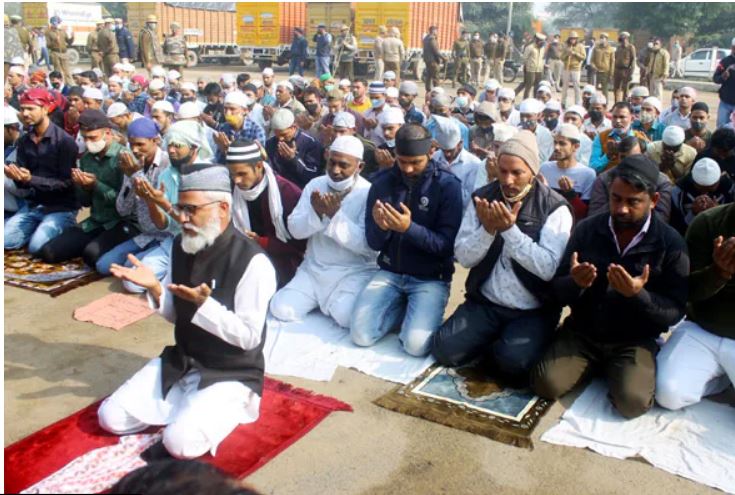
By Mohammad Javed Rasheedi
2021 is about to melt into 2022 in less than 48 hours. Majoritarian politics continued to hold its way over the country this year. But this year, it was not just Muslims but also Christians who felt the heat of Hindutva attacks across India as right-wing Hindu groups waged a culture war against them. Several churches have been attacked and statues of Jesus broken, the latest being in Ambala’s Army Cantonment, the scene of many a Rudyard Kipling work.
December saw targeted hate speeches against minorities. The one at Haridwar saw many participants vow to even take up weapons to redeem their faith by killing non-Hindus. The Hindu right-wing has waged war against Christians accusing them of religious conversion through their missionary work and Muslims for Love Jihad, an Islamophobic trope singling out Muslim men for falling in love with Hindu women and then converting them into Islam. However, such allegations targeting minorities have become a cornerstone of Hindu right-wing nationalism.
The Association for the Protection of Civil Rights, United Against Hate, and United Christian Forum jointly released a fact-finding report highlighting the series of attacks on churches and hate speech against Christians across India. According to the report, India has recorded more than 300 attacks on Christians and worship places within the first nine months of 2021.
Of the 305 incidents, 66 took place in Uttar Pradesh, 47 in Chhattisgarh and at least 32 in Karnataka.
While another report of the United Christian Forum had claimed that India reported more than 400 incidents of violence against Christians across the country. Among those, the incident involved storming churches, burning Christian literature, attacking schools and assaulting worshipers.
However, it is shocking that only 30 FIRs have been registered so far in these cases. On many occasions, restrictions were imposed on people to carry out religious ceremonies.
First on the list of attacks is the one on October 3, where a mob of 250-300 persons barged into a Roorkee church in Uttarakhand and attacked people, destroyed CCTV cameras, and vandalized church premises. Many reports said there were only 12 inside the church for prayers when the attack took place.
Apart from this, the attacks on churches were also reported from BJP-ruled states Haryana, Uttar Pradesh, Madhya Pradesh and Karnataka. And these attacks have taken place over allegations of religious conversion. Christians prayers meetings have also been stopped by the same Hindu mob who had stopped Jumma namaz in the so-called Millennium City, Gurugram. The city also saw an attack on a school’s Christmas celebration.
In the last week of 2021, the bank accounts of Mother Teresa’s Missionaries of Charity were frozen over FCRA claims, West Bengal Chief Minister Mamata Banerjee tweeted about the heartlessness behind the move affecting the charity of the outfit.
Some 22,000 patients and employees have been left without food and medicines, the West Bengal Chief Minister had tweeted.
The Missionaries of Charity was founded in 1950 by the late Mother Teresa, a Catholic nun from Macedonia, who moved to India and took care of the destitute and the poor and won the Nobel Peace Prize in 1979 for her work.
Hate speeches have been curtailed by some norms, keeping them among friends and family. The last week of 2021 saw more public hate speeches in the country. The controversial Dharam Sansad organized in Haridwar, other such events in Delhi and Chattisgarh saw where priests and leaders taking an oath to kill Muslims, and even urged Hindus to arm themselves against the Muslims to make India a Hindu Rashtra.
With next year’s assembly elections in Uttar Pradesh, Uttarakhand, Punjab, Goa and Manipur due shortly, the increase in such hate is an attempt at reviving polarisation.
The violence in Tripura, where VHP hoodlums attacked Muslims and vandalized some of their mosques and Friday prayers disruptions at designated places at Gurugram were also the prime example of rising hate against Muslims.
Anti-Hindu violence in parts of Bangladesh triggered violence in Tripura. The communal riots erupted on October 26 after a rally organized by the Vishwa Hindu Parishad to protest against the attacks on Hindus in Bangladesh turned violent.
The VHP and the Hindu Jagran Manch organized rallies in different parts of the state to protest against the violence in Bangladesh. Later, the VHP and other right-wing groups denied any role in the violence.
The anti-Hindu violence in Bangladesh, which erupted during the Durga Puja festival, was triggered by rumours that the Quran had been insulted in one of the pavilions set up for the celebrations. Seven people were killed, several temples desecrated, and hundreds of houses and business establishments of the Hindu minority were torched.
However, many Muslim groups alleged political conspiracy claiming that the minorities were being targeted in the north eastern state. There were many arrests and some journalists covering the riots in Tripura were also detained. Those who tweeted in favour of Tripura’s Muslims also found themselves being served notices by the state police.
The Uttar Pradesh government had faced severe criticism from the opposition over the killings of Kasganj youth Altaaf in mysterious circumstance. He had been arrested on suspicion of eloping with a Hindu woman. Again, the smoldering love jihad theory. The law and order in Uttar Pradesh, which had earlier won so much praise from PM Modi and other BJP leaders, has been roundly criticized by opposition parties in Uttar Pradesh.
The family of the deceased had alleged that he was tortured by police in the lockup, which led to his death. Police claimed the accused killed himself using the drawstring of his jacket’s hood when he went to the lockup washroom.
Apart from mob lynching, Muslim street vendors in Ahmedabad and some parts of Madhya Pradesh and other parts of the country have been threatened and disallowed from pursuing their livelihood. In Ahmedabad, the Hujarat High Court stepped in to tell off the civic authority to desist from such measures. In Assam, poor peasant families cultivating land for decades were brutally evicted only because they belonged to the Muslim minority. The point-blank shooting of Moinal Haque by police personnel caught on video and the subsequent death dance by a photographer with the remains indeed were a mirror for the crumbling facade of secular India, now overtaken by an aggressive mindless herd mentality spewing hate and violence.
Read Also: Masik Shivratri 2022: Know date, shubh muhurat, puja vidhi, significance
An empty desolate car park outside Sector 37 police station in Gurugram where Muslims had performed Friday prayers for more than a decade turned into a battleground of faith. Hindu right-wing groups staged protests, sloganeered during Friday prayers and held a Govardhan puja at the namaz site just to deny namaz here.
Instead of protecting victims of such incidents, the perpetrators not only enjoy immunity from the law, but also the administration in BJP-ruled states punishes victims. The use of false cases and arrests under draconian laws like UAPA are the preferred weapons.
Haryana news
Dushyant Chautala stood up for farmer’s cause; opposition failed
The Indian farmer constitutes 40 per cent of the country and an even higher percentage of its poor and as the available data points out, is under immense stress.
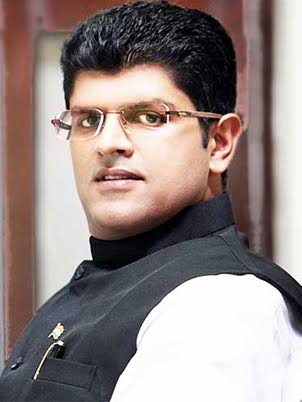
By Prateek Som
The Indian farmer constitutes 40 per cent of the country and an even higher percentage of its poor and as the available data points out, is under immense stress. The modernization of the central farm laws is nothing but an adaptation of provisions which already exist in many states, including Punjab and Haryana. How come the three acts become anti-farmer in some states and why not in many others is something the activists themselves cannot explain.
Big states like Uttar Pradesh, Bihar, Maharashtra, West Bengal, Rajasthan are not even a part of the farmers’ agitation and there is no protest against the central or state government in these states, despite the fact that BJP is not in power in some of these states. More importantly, some agriculturists and several economists have been campaigning for abolishing MSP based procurement as it is unfairly tilted towards a few states like Punjab.
The Central government has neither abolished the MSP nor does it say anything against it in the laws. If, despite this, the impression is being spread that MSP is to be abolished, this is clearly mischievous. The activists are not only spreading the misinformation about the MSP abolition but they are asking for an unreasonable clause in the law for unlimited MSP based procurement which was never a part of the previous laws related to agriculture and APMC acts.
The Indian farm bills are in line with international precedence wherein a number of developing economies have been making changes to their agriculture policies since the 1990s to encourage private sector involvement which would provide a major fillip to the sector. The International Monetary Fund has also backed the recent farm acts as being an important step in the right direction. Despite all the supportive arguments in the favour of the laws, India has seen unprecedented protest in and around the capital as a result of political vendetta.
Politics of Yogendra Yadav and Gurnam Chaduni and its irrelevance to the farmer’s cause
Raising the farmer’s issues should be an act done collectively but the state farmer activists are trying to establish a monopoly in the leadership. They are not even active in all the parts of the state, but targeting only those districts with paddy belt of cropping pattern. Most of them are politically motivated.
In an interview given to NDTV, Yogendra Yadav came out as an aspiring candidate for Haryana CM post and he was advertised as the most fit politician for the position. He formulated his own party, ‘Swaraj’, after being expelled from AAP and lost badly in polls. It is a proof that he lacks mass support. A report by Divya Bhaskar states that farmer leader Gurnam Chaduni was accused of teaming up with political parties like Congress, AAP, SAD and some independent leaders and getting into a deal worth Rs 10 crore to topple the Khattar government in Haryana in return of Congress ticket for elections. There are allegations that Chaduni is collecting funds out of the collection drive for protests and hiding the funds from other leaders. He was also blamed for instigating farmers to disrupt the January 26 celebrations at the Red Fort. Haryana CM Khattar held Chaduni responsible for instigating the farmers that led to clashes between farmers and police at Karnal just before the Kisan Mahapanchayat programme. As a result of his politically motivated efforts, Chaduni was suspended by Samyukt Kisan Morcha from meeting politicians across country. In the 2019 assembly elections, Chaduni contested from Ladwa as an Independent candidate, but suffered a heavy defeat, garnering only 1,307 votes and losing his deposit.
Yogendra Yadav and Gurnam Chaduni are mere examples of how election failures like themselves are trying to garner the support of the commoners for their own political resurrection. The claim of being a leader of the farmers is in contravention with the inconsiderable support both Yadav and Chaduni got in the polls. The Shiromani Akali Dal that left the NDA government in the pursuance of state elections and under the disguise of farmer’s demands has made zero impact on the political ground of Punjab. Their biases can not only be seen from their actions but their cause and concern for two states out of 28. The threat posed by leaders like these to the democratic process of passing of a bill can be seen through the factual analysis of what the laws actually say versus the intentional misconceptions spread by such leaders.
Since an unlimited MSP based procurement is not in the law even today, it is not clear how this is even an issue. More importantly, putting this in the law means India will get tied to distortions that MSP based prices cause in perpetuity. The government has made it clear that procurement at MSP will continue and also that the mandis will not stop functioning. Farmers will have the option to sell their produce at other places in addition to the mandis. It is worth noting that only 6% of farmers actually sell their crops at MSP rates, according to the 2015 Shanta Kumar Committee’s report using National Sample Survey data. There are fears that contract farming will lead to land loss of the small and marginal farmers to big corporates. However, adequate protection of land ownership is in place to protect farmer interests. The act explicitly prohibits any sponsor firm from acquiring the land of farmers – whether through purchase, lease or mortgage. The point to note is that contract cultivation is voluntary in nature and farmers cannot be forced into an agreement.
How Dushyant Chautala is taking initiatives for farmers
Dushyant Chautala is the only state leader who has met Central leaders regarding the farmer demands – Prime Minister, Home Minister, Agriculture Minister along with other cabinet ministers Nitin Gadkari and Piyush Goyal. No other leader in India has met them specifically for farmers’ demands. That shows the concern and responsibility on the part of the JJP leader who is a leader of the masses.
In April 2020, Deputy CM Chautala addressed that the state government will procure the crops of the farmers in a better way while saving the state from the corona epidemic. As a result of this, even in the pandemic situation, mandis have been increased to 162 from 67 for the purchase of mustard at MSP. Haryana is the only state across the country which has started procurement of mustard crop in this pandemic. In November 2020, Dushyant assured the farmers that government will buy every grain of the crop. He made procurements for non-MSP crops to get the rate of MSP crops. He also announced formation of women Self-Help Groups in all villages on the lines of successful initiative in Hisar, to increase employment opportunities for women and showcase their talent at international level.
In February 2021, Dushyant made the announcement to buy 6 crops including wheat, mustard, pulses, sunflower, gram at MSP, barley is included for the first time. Haryana is the first state to offer MSP for barley. Every farmer is to be registered on the ‘Meri Fasal Mera Byora’ portal at MSP and payment amount will arrive in the farmer’s account within 48 hours. Along with recent announcements, the schemes like Mukhyamantri Parivar Samman Nidhi Scheme, Haryana Agricultural Machinary Grant Scheme, Pragatishil Kisan Samman Yojana, Pragatishil Kisan Trainer and Kisan Mitra Scheme to promote the inclusive growth of farmers in Haryana.
The main agenda of ongoing agitations
Amidst all the chaos, the agitations by activists like Yogendra Yadav and Gurnam Chaduni are for targeting Deputy CM Dushyant Chautala. It is a matter of record that many times they carried protests outside his residence and their intention and cause are suspicious to the core as they did not target any other leader in power like this.
The agitations in Haryana are mainly against the JJP and specifically targeted towards the leadership of Deputy CM Dushyant Chautala. The attempts of the farmer leaders to make Dushyant Chautala resign from the government are nothing but petty politics to destabilize the state government. If the threat to farmers is real, why the cause of the farmers is not taken up by the farmers from masses than some farmers from selected areas and that too under the leadership of politically motivated specific leaders only who have ties with the parties who are eyeing the upcoming elections?
The high-pitched farmer agitation is not just based on incorrect perceptions of what the new farm laws will result in – the abolition of APMC mandis and MSP-based procurement – they are also not about protecting the farmer in the long run. The agitation is purely an attempt to corner the stable functioning state government, to boost the sagging political fortunes of the activist leaders by deliberately misleading farmers, to run a personal vendetta against a young and dynamic leadership of Dushyant Chautala who is making efforts for the farmers and to give chance to Congress to come in power. That is why, before the activists decided to fuel the agitation, they focused on batting for spreading misinformation, have nothing to say about non-MSP crops/livestock in the state and have no future agenda for the inclusive growth and development of farmers. And to make the matters worse, they are trying to provoke the masses against the people in power for their vested political interests.
The author is an Advocate in Supreme Court of India and National Spokesperson of Jannayak Janta Party
-

 Entertainment21 hours ago
Entertainment21 hours agoIbrahim Ali Khan makes Instagram debut, first post goes viral
-

 Cricket news17 hours ago
Cricket news17 hours agoRohit Sharma to lead India at ICC Men’s T20 World Cup 2024, Hardik Pandya to be vice captain
-

 Latest Politics News22 hours ago
Latest Politics News22 hours agoAmit Shah slams Congress over fake video, plays out actual video, says BJP supports reservation
-
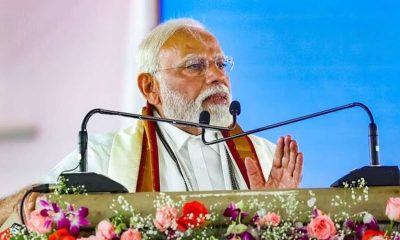
 2024 Lok Sabha Elections15 hours ago
2024 Lok Sabha Elections15 hours agoPM Modi says if Congress comes to power, they will bring out inheritance tax
-

 Latest Politics News20 hours ago
Latest Politics News20 hours agoKarnataka MP Prajwal Revanna suspended from JDS over sex scandal

